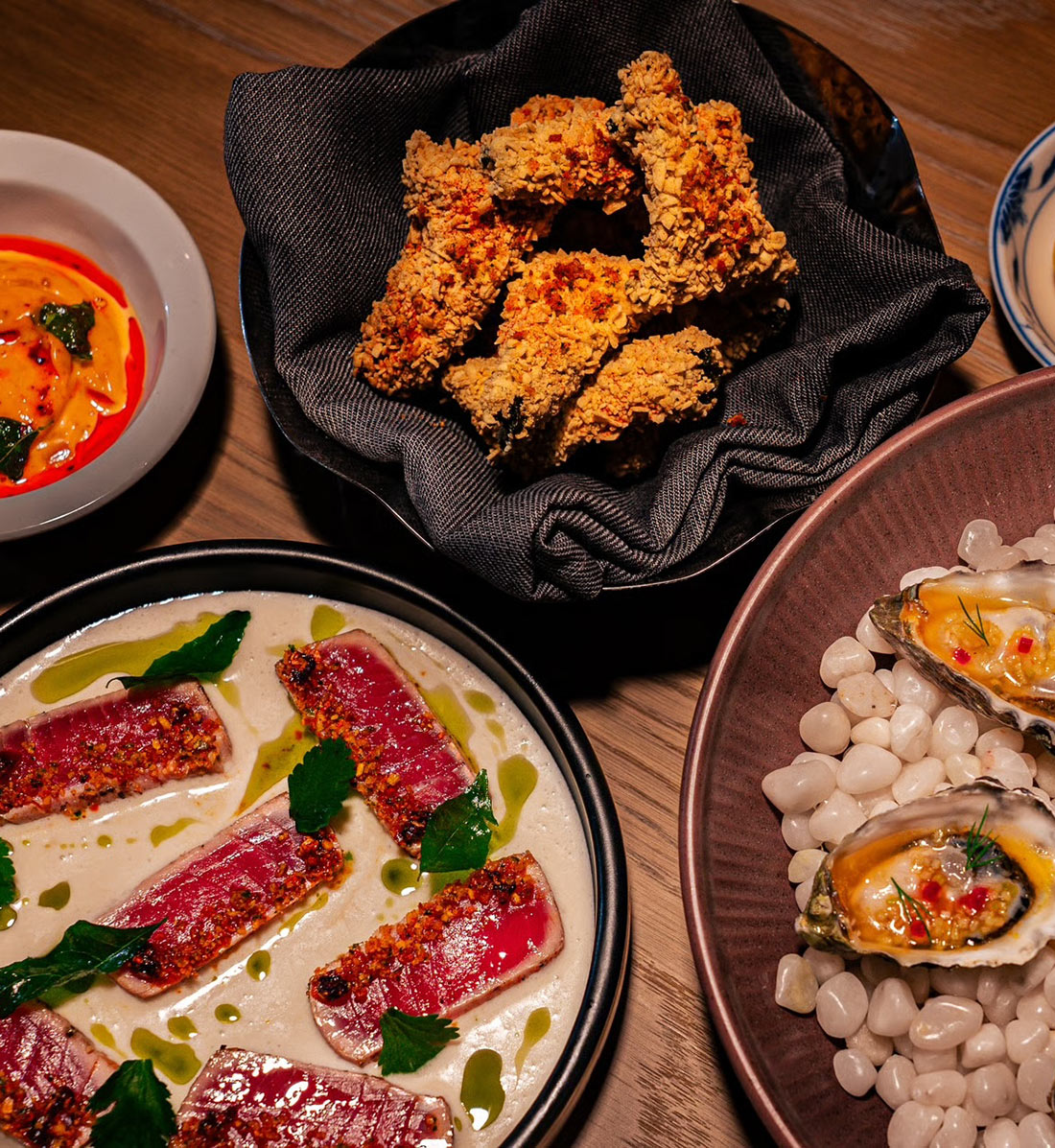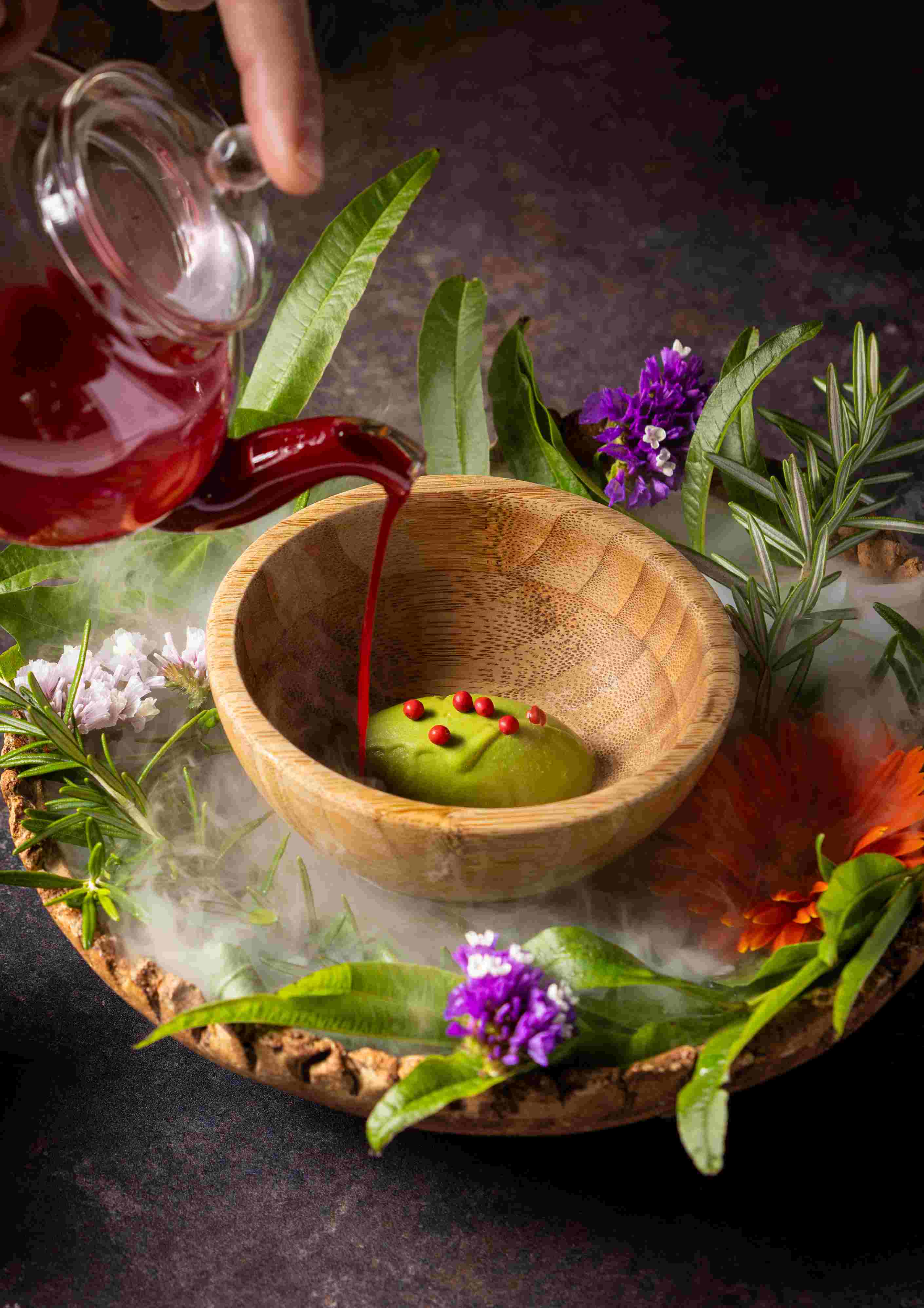In celebration of Earth Day, the MICHELIN Guide spoke with Green Star chefs about the practices they employ in combating climate change and food waste. Our series of interviews, released each Wednesday in April, highlight how chefs are taking measures to educate and inspire diners on making better choices in their daily lives. If you missed last week's piece on California spot Caruso's, catch up here.
With over 119 billion pounds of food wasted in the United States annually according to non-profit Feeding America, the need for innovative solutions is imminent. From no-choice menus sourced locally, to the world’s first zero-waste restaurant, it's clear the future of the culinary world is headed toward greener pastures. And for these restaurants, the future is now.
When Luc Kusters opened Bolenius in 2010 Amsterdam, the culinary world had yet to take steps towards a sustainable tomorrow. “When we first started, there was nothing to gain. There was no MICHELIN Green Star,” says Kusters. “I actually had to convince suppliers to work differently. But we did it because it’s important. It’s important for the future.” Beyond changing suppliers's and consumers's mindsets, Kusters had one more hurdle to climb—convincing the world that leftovers could be tasty (and Star worthy).
Thirteen years and One Star and Green Star later, the proud chef and owner’s philosophy is still the same.
“It’s about the solution,” says Kusters. “If people are not able to have those delicious meals and nice evenings out anymore, they’re not going to change. That’s why it’s up to me, as a chef, to provide people with delicious food in a sustainable way.”
And with his simple yet intense and delicious interpretation of Dutch cuisine, Kusters delivers in remarkable fashion. Here, meat and fish like the Dutch Kamper lamb or the pike-perch take a backseat to Kusters’ brilliantly crafted vegetable dishes. The highlight, however, remains the beetroot Baked in Clay with morels , which also happens to be Kusters favorite dish.
“If you have it in your mind that it is waste, you’re never going to be able to make something new out of it.”
Back in 2012 when Kusters first introduced this dish, people were skeptical of vegetable dishes. Kusters knew whatever dish they put on the table needed to be good. It needed to be a home run. And when he stumbled upon ancient clay cooking techniques, he knew he struck gold.
“Cooking in clay is not a new technique. The Incas cooked with it, the Chinese cooked with it,” explains Kusters. “But in the gastronomy world, with vegetables, I searched the whole internet and found nothing. It was quite innovative, and we managed to do it with 100% plant based ingredients.”
“If you eat it, you don’t miss the meat,” adds Kusters.
Perhaps even more impressive than their signature dish, is Kusters work with leftovers. While other chefs view leftovers and scraps as waste, Kusters views it as potential product. “If you have it in your mind that it's waste, you’re never going to be able to make something new out of it,” describes Kusters.
The most important thing is menu engineering. For example, if you only plan on using the roses from cauliflowers for a dish, the rest of the cauliflower becomes waste. For Kusters, the job of a chef is to be able to use the whole cauliflower. “Everything you buy, you have to be able to make food from it.”
Take the fermented bread sauce; leftover bread is dried in the oven and then fermented for two to three weeks before being cooked into a sauce. The result is a complex yet fresh sauce that is one of Kusters’ proudest achievements. “I love it very much,” Kusters remarks. “First, because it’s delicious. And second, because of the process.”

For Kusters, it's the daily mindset shifts that yield innovation (and deliciousness). “Just get started,” Kusters adds. “Don’t think you have to do something with a big impact. Start with little things and do those little things every day.”

Hero image: Courtesy of Bolenius



















